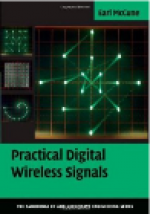Frequency modulation (FM) is a method of impressing information onto an RF carrier by means of shifting the frequency of the carrier wave proportionally to changes in the information signal. FM signals are in principle immune to sources of electrical noise that affect the amplitude of a signal, such as static electricity. Furthermore, since the amplitude of an FM modulated signal is constant, the RF amplifiers used to transmit the signal can operate at full saturated power. This operating condition allows for maximum efficiency of transferring DC power to RF power, versus dissipating power as heat. The tradeoff is that FM signals use more spectrum than other modulation formats.
See the WikiPedia article on FM.




